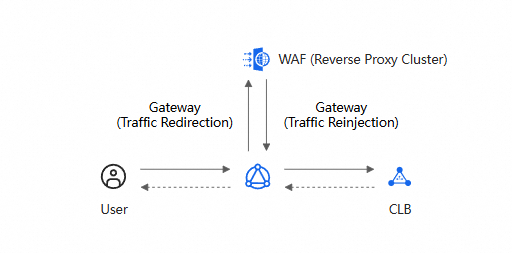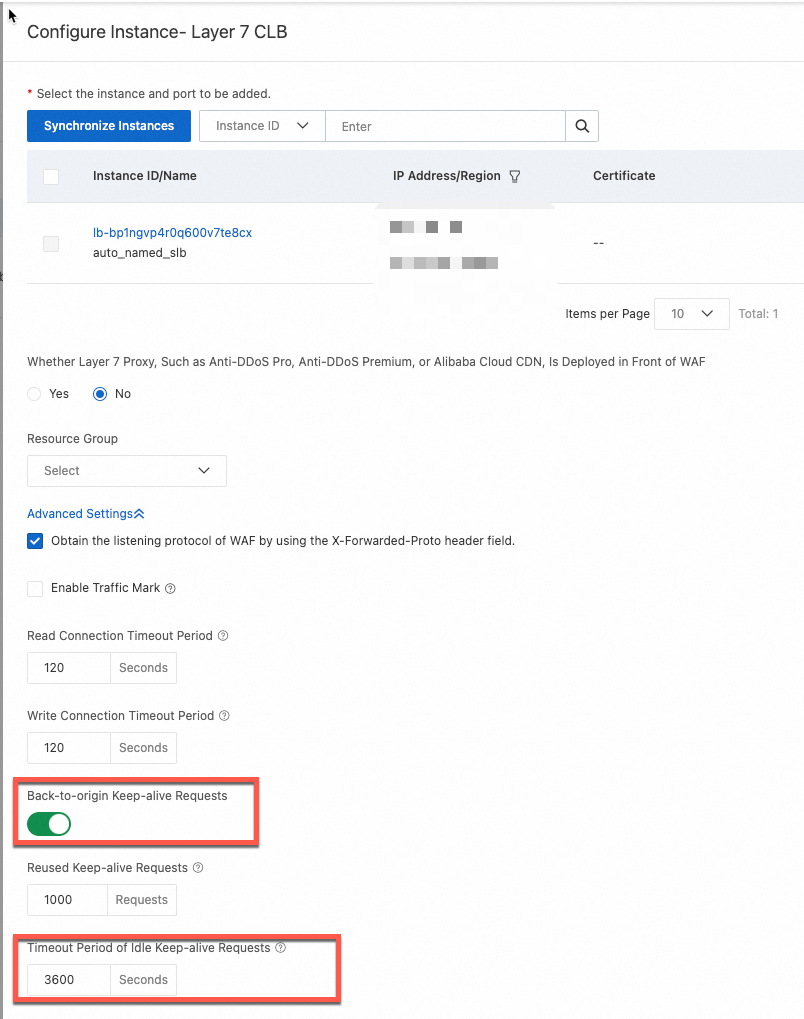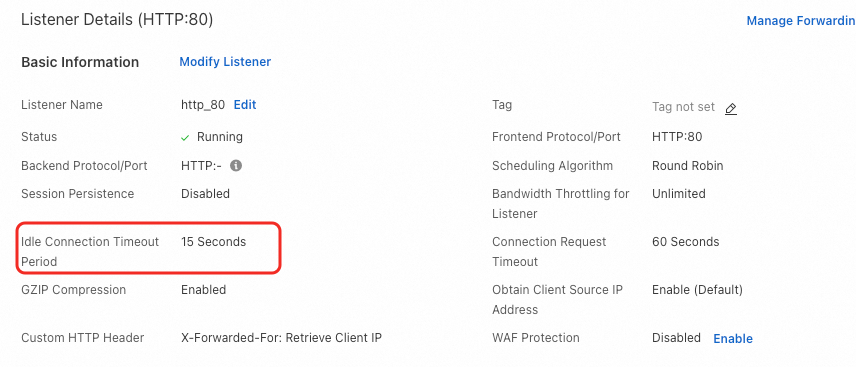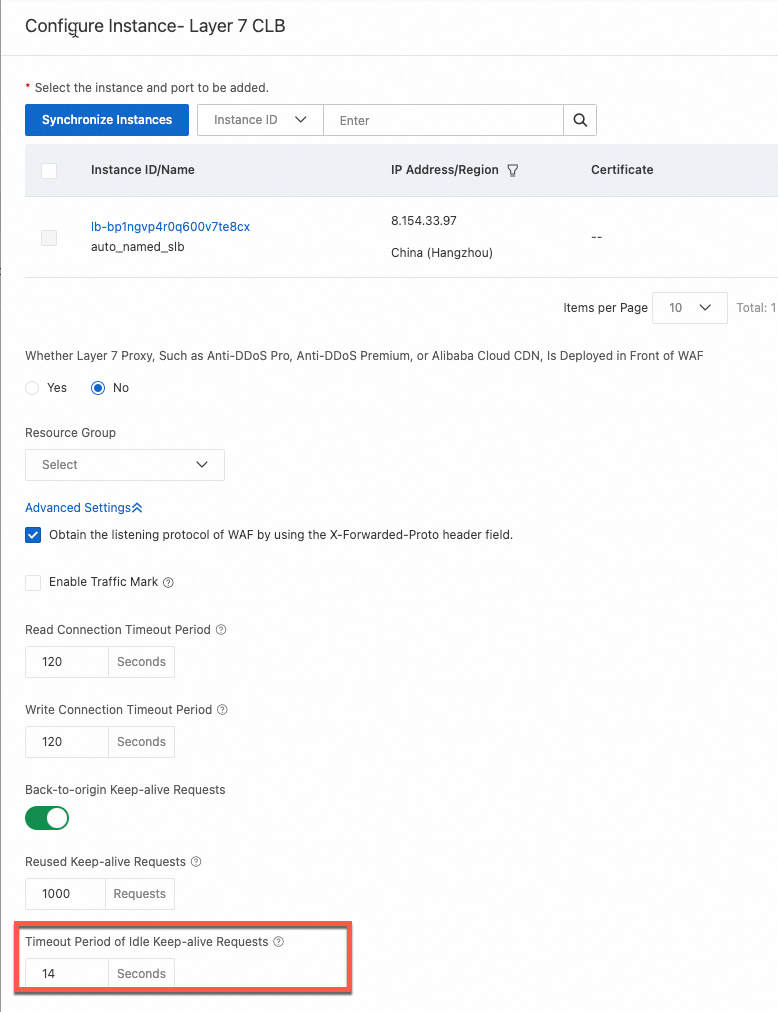This topic provides answers to some frequently asked questions about how to add web services to Web Application Firewall (WAF) 3.0.
Overview
Issues that may occur when web services are added to WAF
Issues that may occur on origin servers after web services are added to WAF
I cannot find the CLB, NLB, or ECS instance to add on the Website Configuration page. What do I do?
Problem description
You cannot find the Classic Load Balancer (CLB), Network Load Balancer (NLB), or Elastic Compute Service (ECS) instance that you want to add to WAF on the Website Configuration page.
Solution
Cause | Operation |
The CLB, NLB, or ECS instance does not meet the requirements. | Check whether the CLB, NLB, or ECS instance meets the requirements specified in the "Limits" section in the following topics: Enable WAF protection for a Layer 7 CLB instance, Enable WAF protection for a Layer 4 CLB instance, Enable WAF protection for an NLB instance, and Enable WAF protection for an ECS instance. |
The required listener is not added to the CLB instance. |
|
The CLB, NLB, or ECS instance is not synchronized to WAF. |
|
When I add an HTTPS listener port of a CLB instance to WAF, the system prompts that the certificate required for instance is incomplete. What do I do?
Problem description
When you add an HTTPS listener port of a CLB instance to WAF, WAF checks the source of the certificate configured for the port. The following error message appears: The CLB certificate whose port number is {port} is incomplete. Go to the SLB console and select a certificate that is from Certificate Management Service.
Cause
The certificate is not purchased by using Alibaba Cloud Certificate Management Service (Original SSL Certificate) and is not uploaded to Certificate Management Service (Original SSL Certificate).
The certificate configured for the HTTPS listener port of the CLB instance is uploaded in the CLB instance. In this case, the certificate cannot be automatically synchronized to Certificate Management Service. However, WAF obtains certificate information only from Certificate Management Service. As a result, WAF cannot obtain the complete information of the certificate and the error message appears.
The certificate was uploaded to Certificate Management Service but was manually deleted. In this case, WAF cannot obtain the information about the certificate from Certificate Management Service (Original SSL Certificate).
Solution
Upload your certificate to Certificate Management Service (Original SSL Certificate). For more information, see Upload an SSL certificate.
Add the certificate in the CLB console and select Alibaba Cloud Certificates for Select Certificate Source. For more information, see Use a certificate from Alibaba Cloud SSL Certificates Service.
In the CLB console, select the added certificate for your port. For more information, see Step 2: Configure an SSL certificate.
WAF returns HTTP 502 status codes after web services are added to WAF. What do I do?
Problem description
When you access the web services that are added to WAF, WAF returns HTTP 502 status codes. Logs are queried, and the results include requests for which WAF returns HTTP 502 status codes.



